In the first weekend of September the Caravana pelo direito à habitaçao, formed by groups and residents fighting for housing rights, departed from Lisbon. The idea was to travel across Portugal in various stops, collecting information, testimonies and proposals to put pressure on the government to fully meet article 65 of the constitution, which dictates a right for all to a fitting home of adequate size, in comfortable condition, hygiene and enabling privacy. These fundamental conditions, and the dignity they are connected to, are, according to a report by Leilani Farha, the United Nations’ ‘special rapporteur’ on the right to housing, unacceptable in today’s Portugal.
Last June, in view of the dramatic increase in house prices and rents, the prime minister António Costa declared that the new priority for the government was to create a public politics to make the right to housing more accessible. This question explicitly regards the middle class and younger generations, but is also related to lower classes and the complex question of ‘informal neighbourhoods.’ At this moment the Parliament is working on a new Basic law to address these issues, lead by the deputy Helena Roseta.
It was with the objective of intervening and exerting an influence on this decision-making processes that an assembly of residents from a few self-made and re-housed neighbourhoods in the metropolitan area of Lisbon, together with the Association Habita!, a CHÃO, an office of urban ethnography, Gestual and SOS Racismo, gave birth to this itinerant project which will travel through the two biggest metropolitan areas of the country, Lisbon and Porto, as well as making stops in the cities of Beja and Coimbra before concluding, on the 30 September, in the Azores Islands, ahead of the local elections.
In the first two weekends of September, Il Salto, the Italian magazine and friends of Political Critique, followed the first six stops of this journey. What we saw provides a deep picture of the housing problems in a country at a crossroads between the austerity of previous years and new proposals of a left wing government, in a moment in which tourism is rapidly changing the face of both Lisbon and Porto. Meanwhile at the walls of the city there are people who still live in shacks, who run the risk of seeing themselves kicked out without any guaranteed alternative.
Day 1 – Bairro 6 de Maio
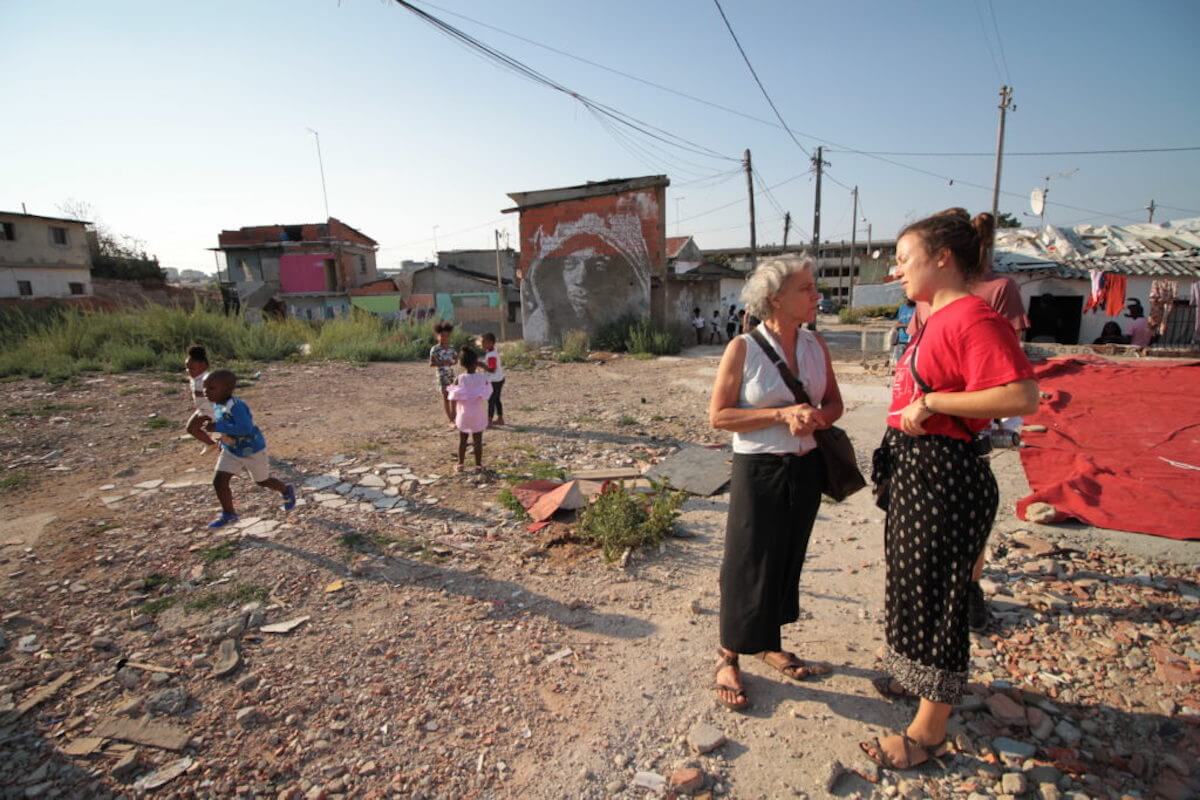
In Lisbon’s Praça de Espanha organisers and activists are holding banners that read #nossacasanossobairronossaluta (our house, our district, our struggle) along with flyers, posters and t-shirts. The ‘caravan’ for now is an empty minibus, later its role will be to shuttle people from various neighbourhoods of the city, bringing residents from one suburb to another, connecting those who have similar problems and are unaware of it.
For months the residents’ Assembly has been doing important work connecting and providing reciprocal information between neighbourhoods. In March they wrote an open letter to bring housing problems to the attention of institutions, entities defending human rights, including media and citizens. This was recognised by a parliamentary commission. These links have multiplied since and now together they are finally starting to organise a linked plan of struggle and resistance. This is one of the roles of the caravan: to work as a catalyst at this point in the process.
The first day’s trip is a panorama of the suburbs of Greater Lisbon: first we cross the Tagus river, until the municipality of Seixal, before moving east, towards Loures. In the conurbation, borders are lost. We move seamlessly from the area of Benfica, with its famous football stadium, still in the municipality of Lisbon, to the composite network of neighbourhoods that is Amadora. You can arrive here quickly with an urban train or even with the metro, it is a ‘suburb’ so close to the centre it has become a goldmine for the construction and property agencies who have been multiplying their profits in the past few years, at a moment when the housing market is literally exploding.
It’s here in Amadoroa that the most number of demolitions and evictions have taken place in recent years.
There’s another face to this expansion. It’s here in Amadoroa that the most number of demolitions and evictions have taken place in recent years. The informal neighbourhood of Santa Filomena, for example, has been completely demolished over the past three, and the list of other neighbourhoods demolished or on the road towards this is long. 6 de Maio is one of these: and that’s why the Caravan stops, to collect testimonies and show its support for the 100 families that live in an urban space that is half-ruined, made up of destroyed houses and others soon to go down.
Neighbourhoods like these date back to the 1950s when many workers came from the countryside to work in the factories. First they lived in shacks, then they self-built homes in the unsold and abandoned land in the immediate vicinity of the city. These were well and truly neighbourhoods, and would soon be filled up with the arrival of immigrants from the colonies, a process that would continue even after independence.
In 1993 an initiative called PER was launched, which was tasked with the progressive dismantling of informal neighbourhoods, and the re-housing of families in affordable homes. This programme neglects to note changes within a nuclear family, or new arrivals as it is unlinked to the new census process. According to data from the municipality of Amadora, for example, 35% of the population of the neighbourhoods concerned in the initiative would not show up on that census and therefore have “no rights” to be re-housed.
Day 2 – Bairro da Jamaica
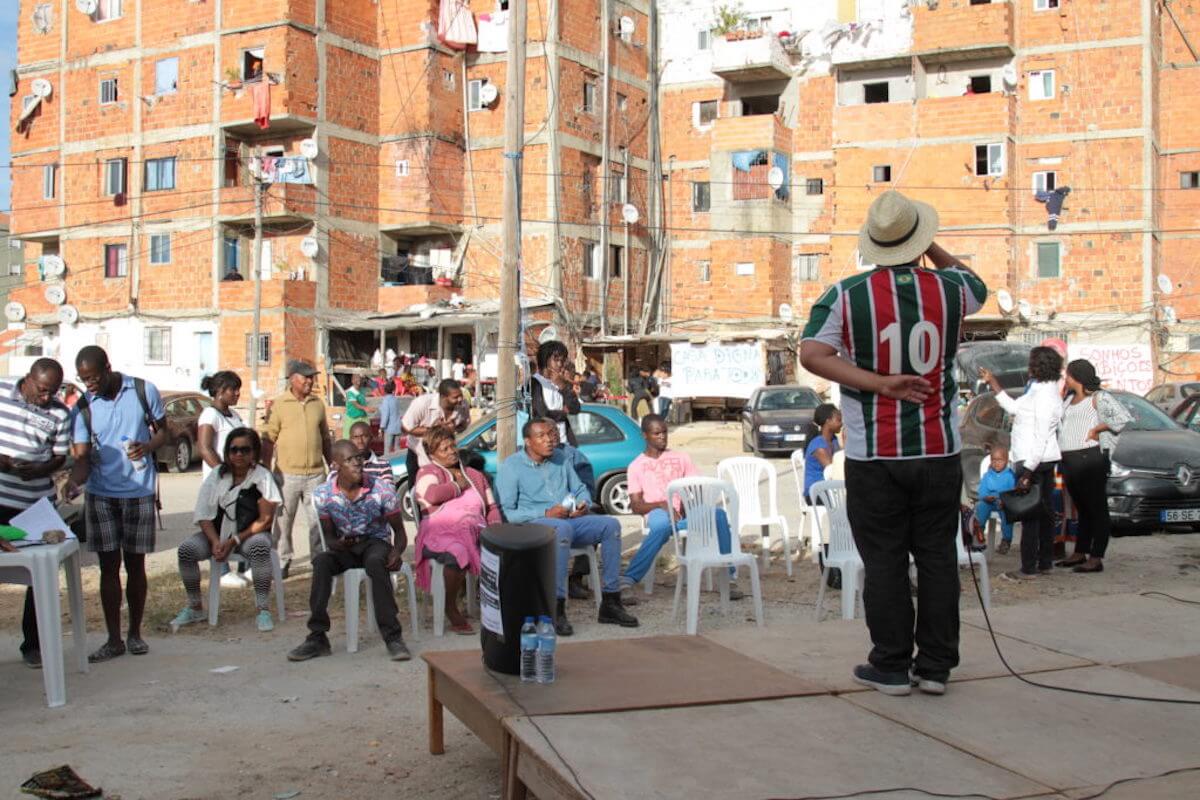
The award-winning film São Jorge by Marco Martins tells the story of a boxer who, faced with economic difficulties, is forced to turn to a credit company for help. The film is set in a complex of unfinished houses, un-plastered, red bricks on show, all in a general state of degradation and overcrowding. This is the Vale do Chícharos neighbourhood in the municipality of Seixal, on the opposite site of the Tagus to Lisbon. Informally it has obtained the name Jamaica. The caravan has come to show solidarity with the group Consciência negra who are working to collect signatures for a new Law on nationality in Portugal.
This neighbourhood has its origins in the 80s when a construction company left its buildings unfinished; these were bought by the bank Caixa geral dos depositos, who in turn sold it to another company called Urbangol. Then, at the start of the 90s, many immigrant families, the majority Africans coming from ex Portuguese colonies (especially Guinea-Bissau and São Tomé) occupied the complex, completing the buildings, building annexes out of brick as well as making their own water and electricity supplies and an improvised sewage system.
If a few families miss their payment then those that have paid are equally threatened to remain without current.
Today 215 families live in Jamaica, in terrible conditions, owing to leaks, from the poor building materials used in construction, and overcrowding. After having threatened to cut power to the neighbourhood the Edp, the group that manages Portugal’s electricity, reached an agreement with the local government, and an assembly of residents, and installed individual counters in each building. The result is that if a few families miss their payment then those that have paid are equally threatened to remain without current. The possibility of a cut hangs ever-present in the air.
Many of the thousand or so people that live in the neighbourhood are not included in PER so don’t have the right to re-housing. The area also suffers from heavy discrimination by the rest of the society, as well as a lack of services, which only increases the state of segregation the inhabitants live in.
Day 3 – Casal da Boba and Bairro da Torre
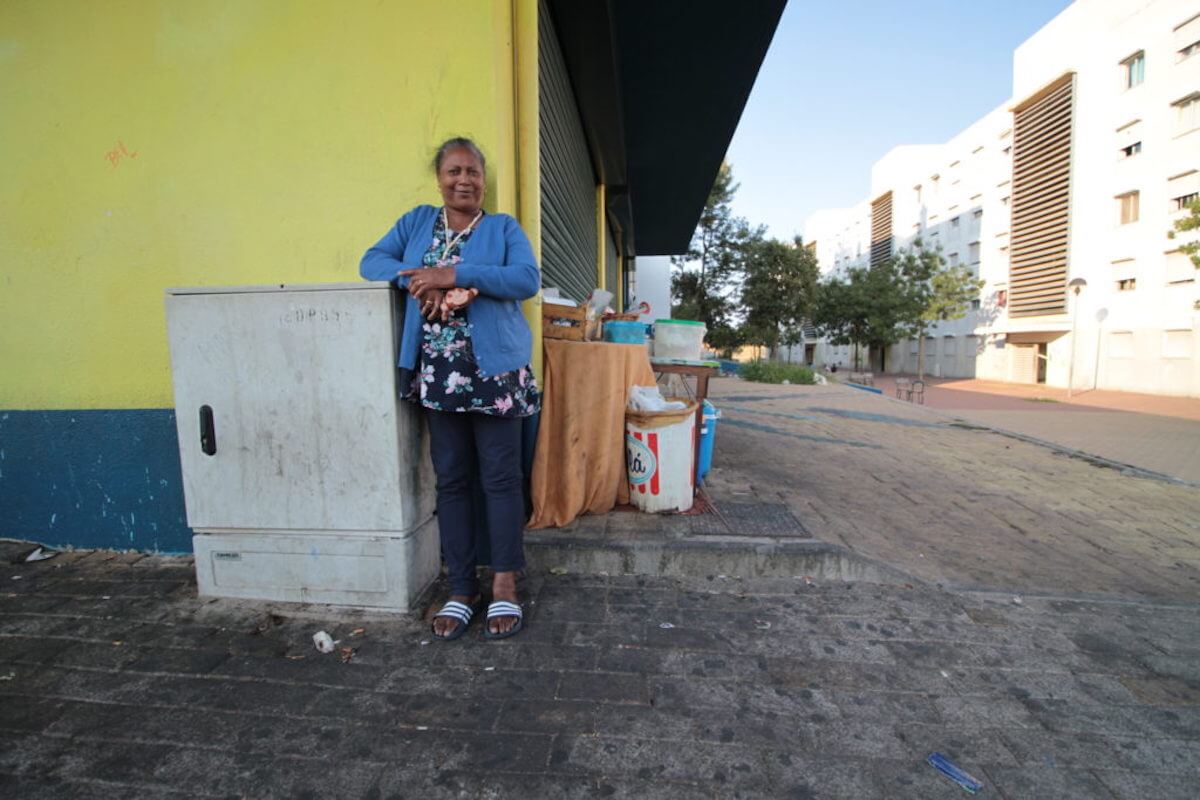
‘Segregation’ is a recurring word in the testimonies we collected along the various stops. Casal da Boba, for example, like Amadora, is a neighbourhood built by the local government less than twenty years ago to house the inhabitants of the demolished neighbourhoods of Venda nova and Fontainhas, the latter of which featured in Ossos, No quarto da Vanda and Juventude em marcha by Pedro Costa, among the best films of recent Portuguese cinema.
It was a move from a small ghetto to a bigger ghetto. Now the inhabitants of Casal da Boba pay rent for apartments that in just a few years have began to present many problems, and lack basic maintenance. Not only this: the inhabitants feel discriminated against, simply for the fact of living in a neighbourhood stigmatised as “problematic”, a centre of crime and drug dealing. Police violence, as a result, has focused on people of African descent, as some recent episodes have unfortunately confirmed.
Bairro da Torre, in the municipality of Loures, where the caravan concludes its third day, suffers from all of these problems to the maximum degree. This community, made up of Roma and others of African origins (mainly from Capo Verde) have been living without running water for two years, and without power for more than six months.
Day 4 – Mouraria
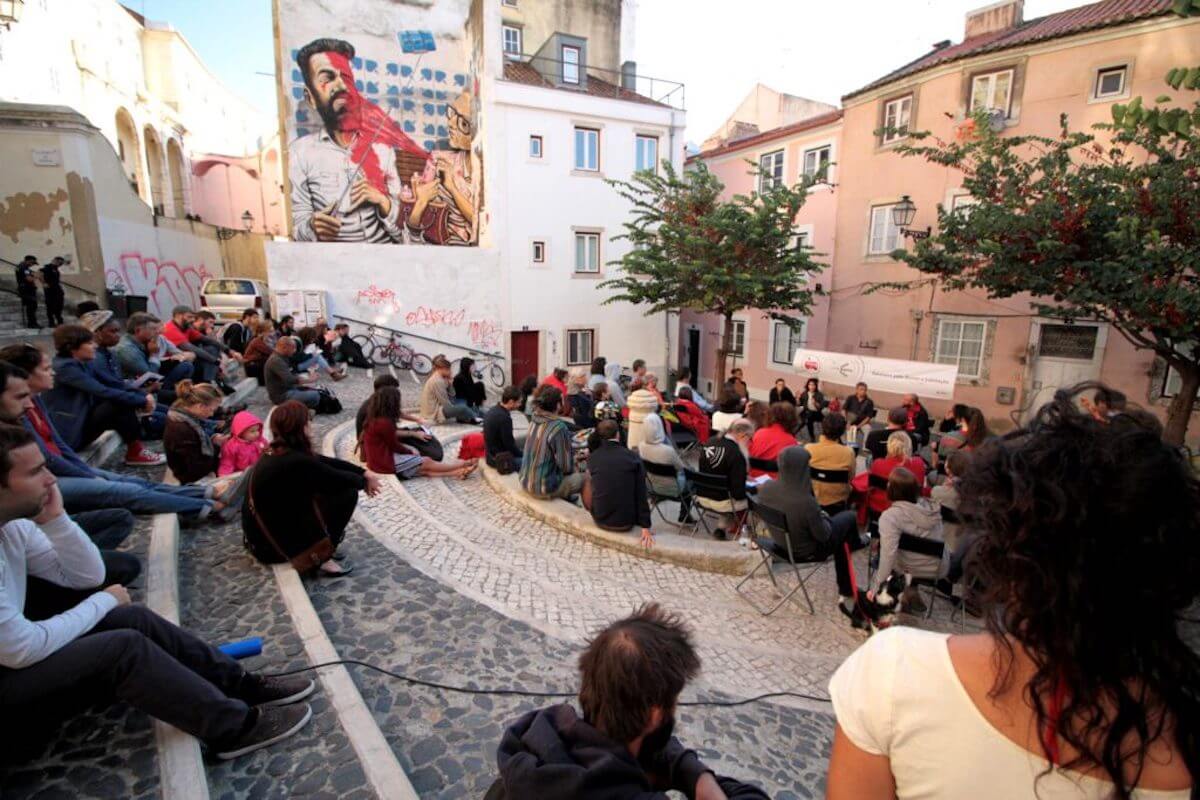
On the second weekend the caravan moves from the periphery to the centre. Tourism in Lisbon is growing year-on-year at an incredible rate. With so many hotels and hostels the Portuguese capital has become, according to statistics, one of the cities with the best offers for rooms and apartments on Airbnb in Europe. Short-term rents were regulated recently with measures included in the new laws on tourist enterprise, but what’s lacking is a real distinction between small and grand renters: only the latter pay the sums that are required for tourist accommodation.
The price of long-term rents on the other hand has not ceased to grow. The Troika’s Memorandum, which the last government signed in 2011, dedicated an entire chapter to housing: the goal was to “dynamize” the rental market and buying markets. The parliamentary majority at the time followed the law to the letter, which was signed by then Minister of Territorial planning and now candidate for mayor of Lisbon, Assunção Cristas, and made it easier for landlords to kick out tenants and increase rents.
Precarity and underemployment are very concentrated in the city precisely where tourism has become dominant.
In April 2017 the new majority approved some modifications: the period of time for which rent prices could be frozen for certain categories of residents was extended and they made it more difficult to evict tenants in the case of renovation works. These are significant measures, but do not challenge the logic of a law which concedes an open hand to the market and in particular property speculators, at the expense of the rights of people that cannot cope with the increases caused by sudden mass acquisitions.
The debate organised today by the Caravan provides a platform for various inhabitants who have been evicted in the city centre. It’s hosted by ABTS from Barcelona, Ciutat per a qui l’habita from Palma, together with the groups Morar em Lisboa and the Colectivo de Moradoras da Rua dos Lagares, a group of families that is struggling against eviction in a building in the Mouraria neighbourhood.
The idea that tourism is the only economic resource that can save Portugal from the crisis is put to the test. For while tourism brings great wealth to big investors, it also offers salaries that are lower than in other industries. Precarity and underemployment are very concentrated in the city precisely where tourism has become dominant. What needs to be respected, the event concludes, is the ‘right to the city’: giving space to more sustainable and socially important sectors.
Day 5 – Lumiar
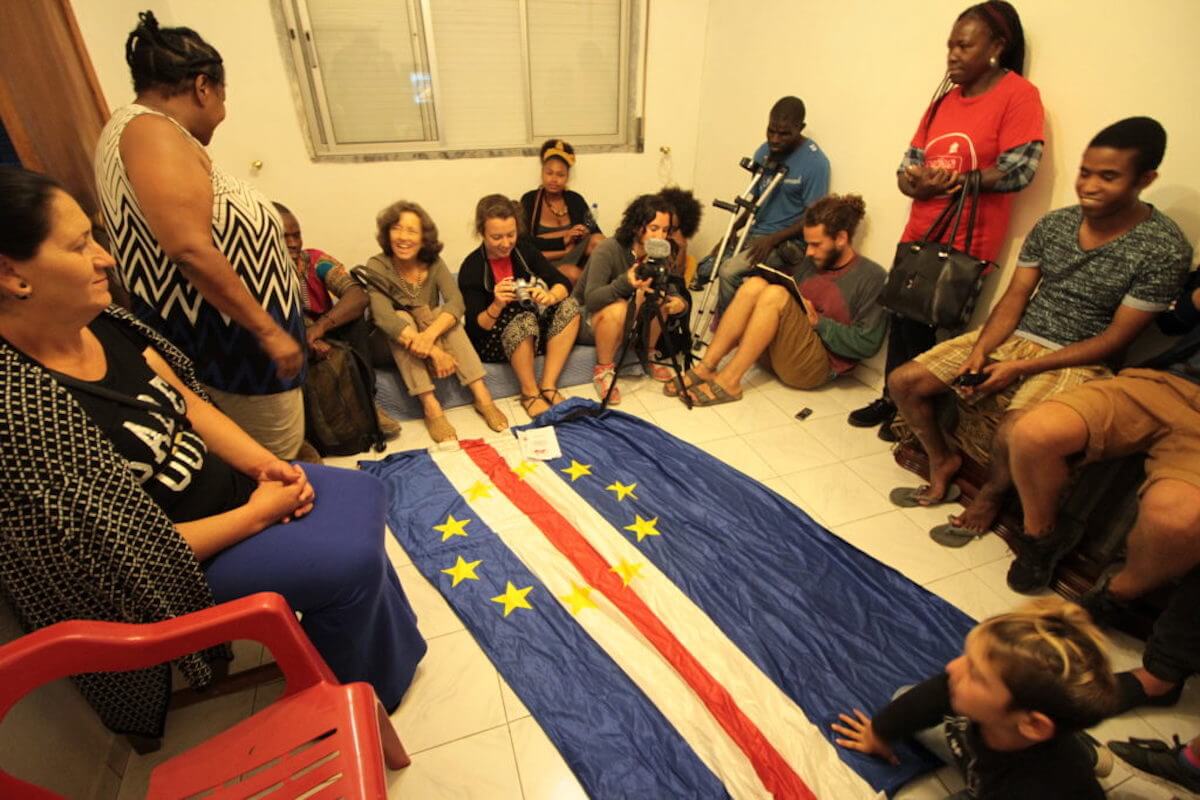
The caravan arrives at Chelas and then at Lumiar where the overcrowding of social housing has lead to a series of occupations.
Another measure from the previous government that particularly hit housing rights was that which had be altered at the end of 2014, the Law on concessional rent. The modifications to this law, which allows 120 thousand families in Portugal to have access to housing on the basis of low family income, were made on the basis many could not deal with price increases. Others were excluded from the programme for just a very small increase in salary, or for being absent from the house for a period of over six months, perhaps because of emigration, which has been a fixed part of the country in the recent years.
After two years the new parliamentary majority has made significant modifications, linking rent to net and no longer gross income, introducing a clause that enables the possibility of remaining in the old system if the recalculation creates a rent increase, all with the explicit intention of increasing stability within social housing areas, no longer designating properties exclusively to families in absolute need and then denying them as soon as they see a tiny improvement.
Nonetheless the legacy of the austerity years continues to weigh on many of these families and those who could not pay back in this period have accumulated sizeable debts. For this reason the Caravan is part of a public petition organised by the association Habita, demanding the write-off of these sums, as a way to enable families to escape from a state of permanent indebtedness.
The 120 thousand existing social houses are clearly insufficient, and while the government has promised to create 170 thousand in an 8-year term, the waiting list grows. According to the IHRU, to get a state property, of which there are only 13 thousand (the others are divided between local government and various kinds of benefit organisations), 2120 people are already waiting.
Day 6 – Beja
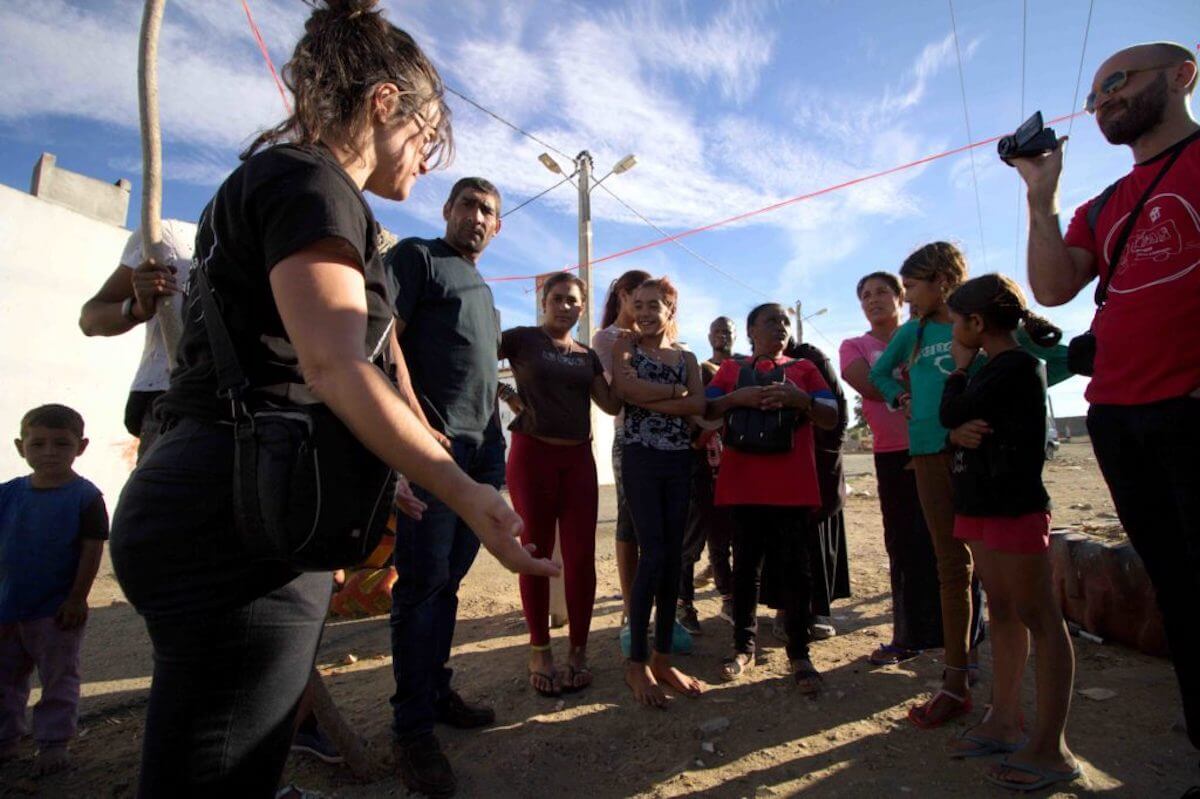
Next weekend the Caravan will continue to Porto and to Coimbra, before turning to the island of São Miguel, the most populated of the Azores archipelago. Our journey, however, ends here, but not before we have time to move out of the metropolitan area of Lisbon towards rural Portugal where there are many different housing problems.
In Beja, in the region of Alentejo, we visit the Roma community of Bairro da Pedreiras which is made up of 500 people. In 2006 the local government built a complex of 50 small bungalows with the stated aim of improving the living conditions for Roma who were living in the shacks of Bairro da Esperança. Along with this, however, they built a three-meter high, hundred-meter-long wall that separated the new neighbourhood from the main road and hid the Roma community from the city. Residents of the former were forced to increase their journey-time if they wanted to go to the centre, or simply the closest supermarket.
The Five Star Movement is at war with housing activists in Rome
We were able to see only a few traces of this wall because in 2015 the community decided to destroy it with stones, hammers, and pieces of iron, dismantling it slowly, piece by piece. Complaints by Amnesty International among others brought the case to the European Committee of Social Rights and it got a lot of media attention. The justification by the local government was that the wall was necessary to stop children from reaching the road, and that it was therefore for their own security. This says much more about racism towards Roma in Portugal.
The Caravan found that the problems of Bairro das Pedreiras continue to be extremely serious: these houses were built using poor materials, and when it rains they flood. Their size doesn’t provide space for families to grow, so as a result in the field nearby there are a whole variety of different additional shacks. On top of this are appalling hygiene conditions, a lack of public transport links and ghettoization, which weighs heavily on health, as well as a lack of schooling. All of this isolates the community in the context of the city.
![Political Critique [DISCONTINUED]](http://politicalcritique.org/wp-content/uploads/2015/09/Political-Critique-LOGO.png)
![Political Critique [DISCONTINUED]](http://politicalcritique.org/wp-content/uploads/2015/09/Political-Critique-LOGO-2.png)